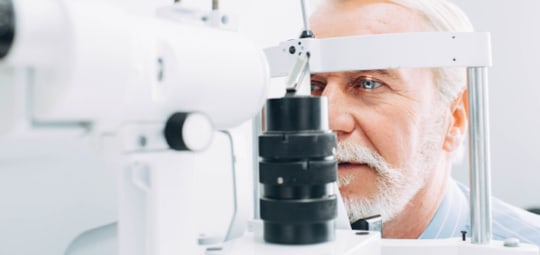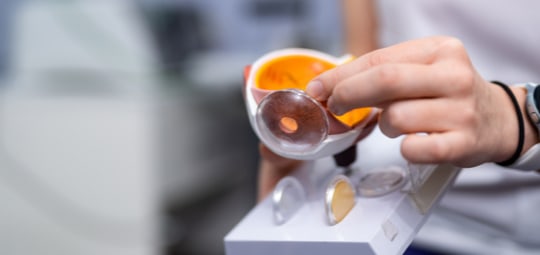Your eyelashes exist to prevent debris and irritants from entering your eyes. But sometimes, eyelashes can fall out and into your eye. We all know how irritating it is to have an eyelash stuck in your eye. It’s uncomfortable, annoying, and can even be quite painful.
But what do you do when this happens? Do you rub your eye frantically and hope that the eyelash comes out? If you have an eyelash in your eye, you should wash your face and hands, flush your eyes with water, use a cotton swab, and try blinking it loose. If all else fails, visit your optometrist to protect your eye from damage.
What to Do When You Have an Eyelash in Your Eye
When you have an eyelash in your eye, you may experience sensations including:
- Fluttering
- Grittiness
- Sharpness
- Stinging
If you experience these sensations, you should follow simple steps to remove the lash from your eye.
Wash Your Hands and Face
The first and most crucial step is to wash your hands and face thoroughly while being gentle around your eyes. This will help prevent bacteria from entering your eyes and causing an infection.
Next, fill a clean cup with warm water and splash it onto your face to rinse any loose debris, including eyelashes. Then, gently pat your face dry with a clean towel. This will help you to see the eyelash clearly and work on removing it.
Flush Your Eye with Water
If you can see the eyelash in your eye, but it’s not coming out, the next step is to flush your eye with water. You can use a clean cup of lukewarm water to rinse your eye. You could also use a saline solution or artificial tears instead of water.
Tilt your head to the side and pour the water into the inner corner of your eye, allowing it to drain out of the outer corner. This can help to dislodge the eyelash and flush it out of your eye.
Use a Cotton Swab
If the eyelash is still in your eye, you can use a cotton swab to remove it. First, wet the cotton swab with clean, warm water and then gently lift your eyelid away from your eye. Use the cotton swab to gently lift the eyelash off your eye’s surface only on the sclera or whites of the eye. Be careful not to press too hard, as you could cause damage to your eye.

Blink a Lot
When an eyelash gets into your eye, it usually needs time to work its way out. Sometimes, all you need to do is blink a lot to help it along. Blinking helps to move the eyelash around on your eye’s surface, which can dislodge it and cause it to come out. Keep your hands away from your eyes when you’re blinking, as you don’t want to introduce any additional dirt or debris.
What Not to Do When You Have an Eyelash in Your Eye
Eyelashes can damage the eye’s surface, and there are some things to avoid doing to keep your eyes safe.
Don’t Use Unclean Hands
If you don’t wash your hands before trying to remove an eyelash, you can introduce germs and bacteria into the eyes. Viruses, bacteria, and fungi can cause infections, discomfort, and inflammation.
Don’t Use Tweezers
Sharp objects like tweezers or long nails in even the steadiest of hands can put you at risk of corneal abrasion or scratch.
Don’t Rub Your Eyes
Rubbing your eyes may feel like an automatic reflex to dislodge the eyelash, but applying pressure can scratch the cornea. A corneal abrasion can be irritating and make your eyes more prone to infection.
Other Causes of Eye Irritation
If you can’t locate an eyelash in your eye, but you still have irritation or inflammation, it may be from another cause.
Dry Eye
When the eyes fail to produce enough natural tears or the tears evaporate too quickly, it can lead to dry eyes. Dryness, grittiness, or soreness, and the feeling that something’s in your eye is common with dry eye disease.
Wearing contact lenses for extended periods or spending long hours staring at a computer screen can also exacerbate the problem.
Infections
Bacteria, viruses, or fungi can cause eye infections and cause symptoms like:
- Pain
- Feeling like something is in your eye
- Sensitivity to light
- Redness and inflammation
Poor hygiene habits, sharing makeup or contact lenses, and touching your eyes with unwashed hands can increase the risk of infection.
Corneal Abrasion
Individuals who wear contact lenses are more likely to experience a corneal abrasion than those who don’t. An empty contact lens solution bottle or improper handling of contacts can lead to the formation of pesky dust, debris, or even tiny fibres on your contacts.
These imperfections can scratch the outer surface of the cornea and evoke a feeling of something being in your eye. In severe cases, corneal abrasions can even cause:
- Infections like keratitis
- Corneal ulcers
- Iritis, or inflammation of the iris
If you feel you have a corneal abrasion, contact your optometrist immediately.
Visit Stoney Creek Optometry to Preserve Eye Health
Getting an eyelash out of your eye should be handled with care. If you get a foreign body in your eye, contact Stoney Creek Optometry for emergency eye care and recommendations on removing debris in a safe and healthy manner.






















